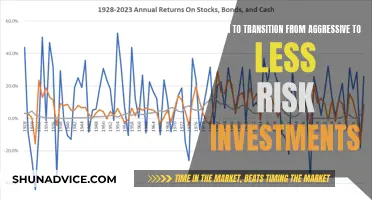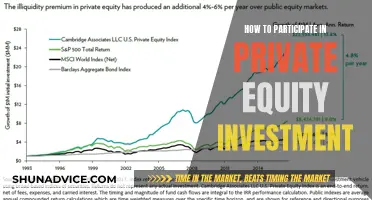
Building a diverse investment portfolio is a crucial aspect of financial planning, enabling individuals to manage risk and maximise returns. Diversification is the art of not putting all your eggs in one basket, and it's a well-known battle cry for financial planners and fund managers alike. Here's why it matters and how you can build a robust, diversified portfolio.
Firstly, diversification is a risk management strategy. By investing in various assets, individuals can reduce their exposure to any single stock, industry, or investment option. This means that if one investment takes a tumble, it won't crack your nest egg, and your overall portfolio remains stable.
Secondly, a diversified portfolio can enhance returns. While it may seem counterintuitive, spreading your investments across different vehicles can lead to higher overall returns. This is because different investments will perform differently in varying market conditions.
So, how do you build a diverse portfolio?
- Spread the Wealth: Invest in a variety of stocks from different sectors and industries. A good rule of thumb is to own at least 25 different companies, including tech, energy, and healthcare.
- Consider Index Funds and Bonds: Index funds are an easy way to gain exposure to a diverse range of stocks and can be a more affordable option. Bonds are a traditional way to diversify, offering lower returns but also reducing risk.
- Keep Building: Regularly add to your investments. A strategy like dollar-cost averaging can help smooth out market volatility by investing the same amount at regular intervals.
- Know When to Get Out: Stay informed about your investments and the market. If a particular investment is no longer serving your goals or is underperforming, be prepared to cut your losses and move on.
- Keep an Eye on Fees: Be aware of the fees you're paying, whether they're monthly, transactional, or management fees. These can eat into your bottom line, so ensure they're worth the value provided.
- Think Globally: Don't limit yourself to domestic investments. Explore international markets, especially emerging markets with high growth potential, to further diversify your portfolio.
- Cash is King: Cash is often overlooked but can be a valuable tool in a diversified portfolio. It provides optionality and protection during market downturns, allowing you to take advantage of future investment opportunities.
Remember, diversification is a long-term strategy, and it's essential to conduct your own research or seek professional advice before making any investment decisions.
| Characteristics | Values |
|---|---|
| Number of stocks | At least 25 from various industries |
| Index funds | S&P 500 or similar |
| Fixed-income assets | Bonds, cash, CDs |
| Real estate | REITs |
| International stocks | From developed markets |
| Commodities | Gold |
| Cryptocurrency | Yes, but volatile |
| Target-date funds | Yes, for "set it and forget it" |
What You'll Learn

Invest in at least 25 stocks from various industries
Diversifying your portfolio by investing in at least 25 stocks from various industries is a great way to manage risk and protect yourself from uncertainty. Here are some detailed tips to help you achieve this:
Spread the Wealth
Don't put all your eggs in one basket. Diversify across different sectors and industries to reduce the impact of a single stock's performance on your portfolio. Aim for 20 to 30 different investments to balance risk and reward effectively.
Consider Index Funds or Bond Funds
Index funds, particularly those tracking broad indexes like the S&P 500, are a low-cost way to achieve instant diversification. They are passively managed, keeping fees low, but may be suboptimal in inefficient markets. Bond funds, on the other hand, can be actively managed and provide a hedge against market volatility.
Keep Building Your Portfolio
Regularly add to your investments using dollar-cost averaging. This strategy involves investing a fixed amount at regular intervals, reducing the impact of market volatility and helping you buy more shares when prices are low.
Know When to Get Out
Stay informed about your investments and overall market conditions. This will help you identify when it's time to cut your losses and sell underperforming stocks.
Keep an Eye on Commissions
Be aware of the fees and charges associated with your investments. Trading certain assets, like mutual funds, illiquid stocks, and alternative investments, often incurs fees, eating into your bottom line.
Go Global
Don't limit yourself to domestic investments. Explore international markets, especially emerging markets like China, to benefit from faster long-term growth rates and protect yourself from negative events specific to your home country.
Periodic Rebalancing
Over time, the size of your holdings will change as some investments outperform others. To maintain your desired level of diversification, rebalance your portfolio at least twice a year or quarterly.
Don't Forget About Cash
Cash is often overlooked but can provide protection during market downturns and optionality for future investment opportunities.
Use Target-Date Funds
Target-date funds automatically adjust your portfolio allocation based on your investment goal timeline. They shift from riskier assets like stocks to safer options like bonds as you approach your goal, making them a "set it and forget it" option.
Blockchain Investment: Diversifying Your Portfolio with Crypto
You may want to see also

Include fixed-income assets like bonds
Fixed-income assets, such as bonds, are an essential component of a well-diversified investment portfolio. These assets provide a fixed interest rate or regular dividend payments, offering investors a steady stream of income. Here are some reasons why including fixed-income assets like bonds in your investment portfolio is a wise decision:
Income Generation and Capital Preservation:
Fixed-income investments, such as bonds, are known for providing a steady and stable income stream over the life of the bond or debt instrument. This regular income can be particularly attractive for conservative investors, especially those in retirement or approaching retirement. The stable interest payments can help offset any losses from fluctuations in stock prices, stabilising the overall risk-return profile of your investment portfolio.
Lower Risk and Volatility:
Fixed-income securities, including government and corporate bonds, are generally considered lower-risk investments compared to equities (stocks). They offer more stable returns and are less volatile. This is because, unlike stocks, fixed-income securities provide known and fixed payments, insulating investors from the direct impact of market volatility.
Diversification and Risk Management:
Adding fixed-income assets to your portfolio is a powerful way to diversify your investments and manage risk effectively. By investing in a mix of fixed-income products and stocks, you can create a balanced portfolio. For example, you could allocate 50% of your portfolio to fixed-income products and the remaining 50% to stocks. This diversification helps to smooth out the inevitable peaks and valleys of investing, making it more likely that you'll stick to your long-term investment strategy.
Principal Preservation and Tax Benefits:
Individual bonds, such as corporate and municipal bonds, can provide principal preservation, meaning you get back the principal amount you originally invested when the bond matures. Additionally, some fixed-income investments offer tax benefits. For instance, municipal bonds may offer tax-free advantages, and deferred fixed annuities provide tax benefits through deferred income.
Creditworthiness and Claim Priority:
When investing in fixed-income securities, it's essential to assess the creditworthiness of the issuing entity. Government bonds, for example, are backed by the full faith and credit of the issuing government, making them a safe investment. Corporate bonds are backed by the financial viability of the company issuing them. In the event of bankruptcy, fixed-income investors often have a higher claim on company assets than common shareholders.
Protection from Inflation:
While fixed-income investments typically offer lower returns than other investments, they can protect against inflation. Treasury Inflation-Protected Securities (TIPS) are a type of government bond designed to protect investors from inflation. The principal amount of a TIPS bond is adjusted over time to account for inflation and deflation, ensuring that your investment keeps pace with rising prices.
In conclusion, including fixed-income assets like bonds in your investment portfolio is a prudent strategy for diversifying your investments, generating stable income, and managing risk. By allocating a portion of your portfolio to fixed-income securities, you can benefit from regular interest payments, lower volatility, and the preservation of your capital.
Invest to Grow: Why Smart Investors Shun Savings Accounts
You may want to see also

Consider adding real estate through REITs
Real estate investment trusts (REITs) are a great way to add real estate to your investment portfolio without the hassle of buying and managing properties yourself.
REITs are companies that own, operate, or finance income-producing real estate. They are traded on major stock exchanges, and you can buy shares in them just like stocks. By investing in REITs, you can gain exposure to a range of properties, including apartment buildings, data centres, healthcare facilities, hotels, offices, retail centres, and warehouses.
Diversification and Risk Management
REITs can provide added diversification to your portfolio and potentially lower overall risk. They are a good counterbalance to stocks, bonds, and cash due to their ability to generate dividend income along with capital appreciation. Additionally, REITs tend to be less volatile than traditional stocks because of their larger dividends.
High-Yield Dividends
One of the biggest benefits of REITs is their high-yield dividends. By law, REITs are required to pay out at least 90% of their taxable income to shareholders as dividends. This makes them a favourite among investors looking for a steady stream of income. However, it's important to note that REIT dividends are typically taxed as ordinary income, which could result in higher tax bills.
Liquidity
REITs are highly liquid compared to traditional real estate investments. They are traded on public exchanges, making it easy to buy and sell shares with just a click of a button. This is especially advantageous if you need to quickly free up cash or adjust your investment strategy.
Types of REITs
There are three main types of REITs:
- Equity REITs: These are the most common type, owning and managing income-producing real estate. They generate revenue primarily through rent.
- Mortgage REITs: These REITs focus on lending money to real estate owners and operators, either directly through mortgages and loans or indirectly through mortgage-backed securities.
- Hybrid REITs: As the name suggests, these REITs combine strategies from both equity and mortgage REITs.
Due Diligence
When investing in REITs, it's important to do your homework. Examine the REIT's portfolio, management team, debt levels, and dividend history. Also, consider the specific sector and type of properties the REIT invests in, as different sectors come with different risks and returns.
Tax Implications
REITs have specific tax implications that can impact your returns. While REITs themselves are not typically subject to corporate income tax, the dividends you receive as a shareholder may be taxed at a higher rate than qualified dividends from stocks. Consider holding REITs in a tax-advantaged account, such as an IRA or 401(k), to mitigate these tax impacts.
Long-Term Investment Strategy
REITs are generally better suited for long-term investment strategies due to how they generate income. It's prudent to start with a small allocation and gradually increase your exposure over time as you get familiar with the real estate market and its dynamics.
In conclusion, adding real estate to your investment portfolio through REITs can be a smart move. REITs offer diversification, stable dividend income, liquidity, and the potential for competitive long-term returns. However, as with any investment, there are risks involved, so be sure to do your research and consult a financial advisor before making any decisions.
Savings and Investments: Strategies for Success in Lean Times
You may want to see also

Understand the basics: stocks vs. bonds
Stocks and bonds are the two fundamental building blocks of most investment portfolios. They are very different investment types, each with distinct characteristics, advantages, and disadvantages.
Stocks
Stocks, also known as equities, represent partial ownership, or equity, in a company. When you buy stock, you purchase one or more shares, and the more shares you buy, the more of the company you own. Stocks offer high-risk, high-return investments, as the value of your shares will rise and fall with the company's performance. Stocks can also generate income through dividends, which are regular payments of company profits to shareholders.
Bonds
Bonds, on the other hand, are loans from investors to a company or government. When you buy a bond, the company or government is in debt to you and will pay you interest over a set period, after which they will repay the full amount. Bonds are generally lower-risk and lower-return investments than stocks, providing a predictable fixed income.
Stocks vs. Bonds
While stocks and bonds both seek to grow your money, they do so in very different ways. Stocks must grow in resale value for you to sell them at a profit, whereas bonds pay you fixed interest over time. Stocks are also generally more volatile than bonds, and so investors often balance their portfolios by including both stocks and bonds, to smooth out the inevitable peaks and valleys of investing.
How to Buy Stocks and Bonds
You likely already own stocks and bonds if you have money in a 401(k) or 403(b) retirement plan. To buy stocks and nongovernment bonds outside of a workplace retirement plan, you can open a brokerage account through an investment firm (government bonds need to be purchased through a TreasuryDirect account). Many investment firms also operate online stock trading platforms, where you can build and manage your portfolio.
Tax Implications
It's important to understand how money earned from stocks and bonds is taxed. Bond interest payments are usually subject to income tax, while profits from selling stocks are subject to capital gains tax, which may be lower than income tax.
Diversification
Both stocks and bonds can be further diversified within each type of investment. For example, within stocks, you can diversify by market capitalization (small, mid, and large caps), sectors, and geography. With bonds, you can consider varying maturities, credit qualities, and durations, which measure sensitivity to interest rate changes.
Unlocking the Power of Savings and Investments
You may want to see also

Learn about global markets
Global markets have the potential for high returns in a short time. They are characterised by highly dynamic movements, where investors must navigate multiple monetary regulations. As a young investor, it may take some time to understand the workings of these markets, but it can be rewarding, especially when your domestic market is experiencing a downturn.
- Start with an ETF or mutual fund: You can start with a small amount of capital by investing in an exchange-traded fund (ETF) or a mutual fund with a low-cost structure and ample liquidity. These funds allow you to invest safely and observe how the global market works.
- Look at international stocks from developed markets: International stock benchmarks, especially in developed markets, have been closely tied to the US market in recent years. Developed markets, particularly in Europe, have had a tighter correlation with US equities.
- Consider emerging markets: Stocks in emerging markets have tended to have lower correlations with US stocks, and these correlations have generally trended downwards since 2000. As countries like China grow at faster long-term rates than the US, companies based in these countries may benefit.
- Understand the risks: Other markets may not suffer as much if your domestic market experiences an economic slowdown. However, emerging markets sometimes face challenges due to their undeveloped economies and financial markets, which can cause bumps in their long-term growth trajectory.
- Protect yourself from negative events: International diversification can help shield you from negative events that might impact your domestic market exclusively.
Adjusting Your Investment Portfolio: Strategies for Success
You may want to see also
Frequently asked questions
Diversification is a way to manage risk in your portfolio by investing in a variety of asset classes and in different investments within asset classes. The idea is that if one stock, sector, or asset class slumps, others may rise.
Diversification is not limited to just the type of investment or classes of securities; it also extends within each class of security. Invest in different industries, interest plans, and tenures. For instance, do not put all your investments in the pharmaceuticals sector. Diversify in other sectors that are picking up, such as education technology or information technology.
You should also divide your money between stocks and bonds to minimise risk exposure. The trick is to balance the two and find an equilibrium between risk and surety. A good rule of thumb is to subtract your age from 100 – this should be the percentage of stocks in your portfolio.
Here are some common diversification strategies:
- Use index funds to boost your diversification
- Don't forget about cash
- Target-date funds
- Periodic rebalancing
- Think global with your investments







